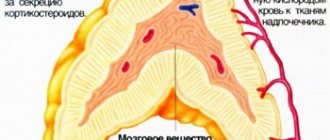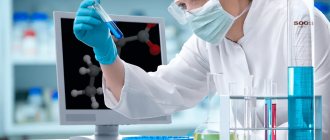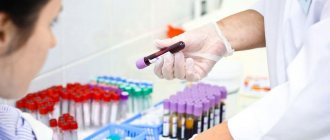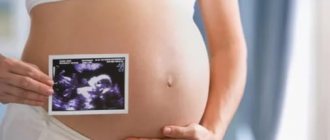We tell you what you can find out about your health by receiving a form with the results of the study.
It is better to decipher a general urine test together with a doctor. The fact is that the indicators of this analysis for different diseases can be quite similar. To make an accurate diagnosis, you need to take into account the patient’s complaints and pay attention to the external signs of a specific disease. Without a doctor, this task is impossible.
“It is necessary to evaluate different urine indicators in a complex manner. It rarely happens that only one indicator is changed; usually several change at once, - urologist of the 1st Danilovsky Multidisciplinary Medical Center Rinaz Kamaletdinov. “And in order to understand what exactly is happening to the patient, it is necessary to take into account the patient’s complaints, his symptoms and apply additional diagnostic methods. After all, we are not treating the analysis, but the patient.”
In addition, there are situations when test results deviate from the norm not because of illness, but because of physical activity, changes in the menu, or taking certain medications. For example, after several hours in the gym, the number of leukocytes in the blood may increase, beets eaten the day before can turn urine pink, and the anti-inflammatory drug indomethacin can turn it blue-green. Therefore, having received a “non-standard” urine test, you need to discuss its results with your doctor: to make sure that a problem exists, the doctor will prescribe a repeat urine test, or refer you for some other test.
However, you can understand some things on your own. The main thing is not to draw far-reaching conclusions from this and not to run to the pharmacy without first talking with a specialist. In forms from different laboratories, the results of a urine test may be presented slightly differently, but almost everywhere they will be grouped by the appearance of the urine, its chemical properties and the results of examination under a microscope.
Causes of hyposthenuria
Physiological reasons
During the day, the relative density of urine of a healthy person fluctuates widely - from 1003 to 1030 g/ml.
This indicator depends on many factors, for example, with excess fluid consumption, the specific gravity may decrease for a short time. The kidneys of newborn children are not able to concentrate urine, so they experience hyposthenuria (about 1002 g/ml). Treatment of edema syndrome with diuretics can also be considered physiological hyposthenuria, since the relative density is inversely proportional to the volume of urine excreted. During the period of swelling, under the influence of diuretics, diuresis increases and “urine dilution” occurs.
Kidney diseases
The most common cause of hyposthenuria is kidney pathology. To maintain ionic balance in the blood and other tissues of the body during urine formation, the kidney tubules excrete various electrolytes (sodium, potassium, calcium, chlorides, bicarbonates, etc.) into the urine. This is called "renal concentrating function." If the tubules are damaged, this ability is impaired.
Since tubular damage to one degree or another is observed in almost every renal disease, they are quite often accompanied by hyposthenuria. Its severity directly correlates with the severity of nephrological pathology. Specific treatment leads to a gradual normalization of specific gravity. The most common kidney diseases in which hyposthenuria occurs:
- glomerulonephritis;
- pyelonephritis;
- hypertensive nephropathy;
- tubular dysfunctions (tubulointerstitial nephritis, renal tubular acidosis);
- chronic renal failure.
Hyposthenuria
Diabetes insipidus
Vasopressin (antidiuretic hormone) is the main regulator of water balance in the body. With diabetes insipidus, its absolute (in the central form) or relative (in the nephrogenic form) deficiency occurs, which causes severe polyuria (up to 15-20 liters per day) and hyposthenuria due to urine dilution.
Replacement therapy for central diabetes insipidus quickly leads to an increase in relative density to normal values. The nephrogenic form, due to the resistance of the renal tubules to antidiuretic hormone, is much more difficult to treat, so hyposthenuria can persist for a long time.
Causes of central NSD:
- brain injuries;
- surgical interventions on the central nervous system;
- brain tumors;
- previous meningitis or encephalitis.
Causes of nephrogenic NSD:
- vasopressin receptor mutations;
- various kidney pathologies;
- electrolyte disturbances (hypercalcemia, hypokalemia).
Appearance
Color. Normal urine color is yellow: from straw yellow to dark amber. The shade depends on the concentration of urochrome, a coloring pigment in urine. Concentrated urine that has been sitting in the bladder overnight has more urochrome, so the urine will be more amber. And if a person has recently drunk water, the color will be more like straw.
In this case, urine can be colored in almost all the colors of the rainbow. Moreover, an unusual shade can either be a variant of the norm or indicate a disease. Moreover, urinary tract infections can produce different shades of urine - the color depends on the specific type of pathogenic microorganisms.
“Sometimes a patient’s urine turns red,” says Svetlana Artemova, candidate of medical sciences, nutritionist and nephrologist at GMS Clinic. Without analysis it is impossible to understand why this happens. This may be due, for example, to eating beets, to treatment with sulfonamides, or to rhabdomyolysis, a condition in which muscle tissue is destroyed.”
Diagnostics
Despite the fact that this condition may have physiological causes, if hyposthenuria is detected, you should immediately consult a general practitioner or nephrologist to determine the etiological factor. At the appointment, the doctor asks the patient about complaints that may be useful in the differential diagnosis, such as the urge to urinate at night (nocturia), which is characteristic of kidney disease, or a constant feeling of thirst, typical of patients with untreated diabetes insipidus.
During examination, attention is paid to the presence of edema on the face or lower extremities. During the physical examination, blood pressure is measured and Pasternatsky's sign is checked. It is worth noting that when determining relative density during clinical urine analysis, test strips are used.
The reagent zone of the strip changes its sensitivity depending on the pH of the environment, therefore, if the urine is alkaline, a false underestimation of specific gravity readings is possible. The following studies are also prescribed:
- Blood tests.
In a biochemical blood test, an increase in the concentration of urea, creatinine, and C-reactive protein may be noted. In people suffering from diabetes insipidus, hypernatremia and an increase in plasma osmolarity are detected. - Urine tests.
Other indicators of general urine analysis, such as hematuria, proteinuria, leukocyturia, can help in the diagnostic search for the etiological factor. In people with diabetes insipidus, urine sodium concentration and osmolarity are reduced. - Hormonal studies.
Determination of the content of antidiuretic hormone is carried out for the differential diagnosis of forms of diabetes insipidus. With central NSD, the hormone concentration is reduced, while with nephrogenic one, it is normal or even increased. - Ultrasound of the kidneys.
In nephrological diseases, various pathological signs are detected - expansion of the pyelocaliceal system, changes in the parenchyma, reduction in size (“shrinking”) of the organ.

Diagnosis of hyposthenuria
Chemical properties
Protein. Normally there should not be any of it in the urine, or there should be very little of it - less than 0.002 g/l. Sometimes it does appear in healthy people - for example, if they ate meat, or experienced serious physical activity or emotional stress the day before - but if a person stops eating meat, rests and calms down, protein secretion stops. If it continues to be excreted in the urine (this is determined by repeating the test again and again), it may be due to inflammation of the kidneys or urinary tract.
Glucose. Healthy non-pregnant people should not have glucose in their urine. As we have already written, “sugar” enters the urine during glucose metabolism disorders, for example, in type II diabetes.
Ketone bodies. These substances accumulate in the body if the body does not have enough carbohydrates and is forced to destroy fat reserves to obtain energy. Since it is not normal for us to eat them, ketone bodies should not be present in the urine of healthy non-pregnant people. As a rule, ketone bodies appear in the urine of fasting people or due to heavy physical exertion, but most often against the background of uncontrolled type 1 diabetes.
Bilirubin. Healthy, non-pregnant people should not have bilirubin in their urine. As we have already written, bilirubin enters the urine if the liver cannot cope with its utilization. This happens with hepatitis and when the outflow of bile is disrupted - this can happen if the bile ducts, for example, are blocked by a gallstone.
Urobilinogen. This is a colorless product of the “neutralization” of harmful bilirubin by the liver and intestinal bacteria. Up to 10 mg/l of urobilinogen is excreted in the urine. If the level of this substance is high, there is a high probability that the person has liver problems - from viral hepatitis to liver failure. But it is possible that the issue is the accelerated breakdown of hemoglobin - this happens, for example, with hemolytic anemia and some other diseases.
Nitrites. Together with urine, the body gets rid of nitrogen compounds - nitrates, so healthy people always have them in it. But if pathogenic bacteria settle in the urinary tract - for example, E. coli, Enterobacteriaceae or Klebsiella - nitrites appear in the urine. The fact is that these bacteria feed on nitrates and convert them into nitrites, so the presence of these substances in the urine is always a bad sign. However, the absence of nitrites does not mean the absence of infection. Some staphylococci and streptococci are indifferent to nitrates, so they have to be identified by examining urine under a microscope.
Correction
There are no independent methods for correcting hyposthenuria. To eliminate it, treatment of the underlying disease is necessary. The following medications are used as conservative therapy:
- Antibiotics.
Patients with pyelonephritis are prescribed antibacterial agents from the group of penicillins (amoxicillin) or cephalosporins (cefexime). - Glucocorticoids.
To stop the inflammatory process in the renal tissue during glomerulonephritis, glucocorticosteroids (prednisolone, methylprednisolone) are used. - Cytostatics.
In severe and rapidly progressive forms of glomerulonephritis, in case of ineffectiveness of glucocorticoids, cytostatics (azathioprine, cyclophosphamide) are added to treatment. - Desmopressin
. This drug is a synthetic analogue of antidiuretic hormone. In tablet or intranasal form, it is used as hormone replacement therapy for the treatment of central diabetes insipidus. - NSAIDs.
Prescribed for nephrogenic NSD. Nonsteroidal anti-inflammatory drugs (indomethacin, ibuprofen) can reduce the formation of prostaglandins in the kidneys, which several times increases the sensitivity of the kidney tubules to vasopressin. - Diuretics.
Thiazide diuretics, when taken for a long time, reduce the excretion of water in the urine. Due to this property, they are successfully used in patients with NSD. To enhance the implementation of this effect, the patient should limit the consumption of table salt.
Sources
- Zifodya JS., Kreniske JS., Schiller I., Kohli M., Dendukuri N., Schumacher SG., Ochodo EA., Haraka F., Zwerling AA., Pai M., Steingart KR., Horne DJ. Xpert Ultra versus Xpert MTB/RIF for pulmonary tuberculosis and rifampicin resistance in adults with presumptive pulmonary tuberculosis. // Cochrane Database Syst Rev - 2021 - Vol2 - NNULL - p.CD009593; PMID:33616229
- Junqueira-Kipnis AP., Dos Anjos LRB., Barbosa LCS., da Costa AC., Borges KCM., Cardoso ADRO., Ribeiro KM., Rosa SBA., Souza CC., das Neves RC., Saraiva G., da Silva SM., Silveira EA., Rabahi MF., Conte MB., Kipnis A. BCG revaccination of health workers in Brazil to improve innate immune responses against COVID-19: A structured summary of a study protocol for a randomized controlled trial. // Trials - 2021 - Vol21 - N1 - p.881; PMID:33106170
- Mosaei H., Zenkin N. Inhibition of RNA Polymerase by Rifampicin and Rifamycin-Like Molecules. // EcoSal Plus - 2021 - Vol9 - N1 - p.; PMID:32342856
- Sharma P., Goyal RK., Nandave M. A Review: Prevention, Treatment and Management of Tuberculosis through Combinational Approaches of Different Indian Systems of Medicine. // Drug Res (Stuttg) - 2021 - Vol70 - N2-03 - p.65-70; PMID:31931549
- Dhar R., Singh S., Talwar D., Mohan M., Tripathi SK., Swarnakar R., Trivedi S., Rajagopala S., D'Souza G., Padmanabhan A., Baburao A., Mahesh PA., Ghewade B., Nair G., Jindal A., Jayadevappa GDH., Sawhney H., Sarmah KR., Saha K., Anantharaj S., Khanna A., Gami S., Shah A., Shah A., Dutt N ., Garg H., Vyas S., Venugopal K., Prasad R., Aleemuddin NM., Karmakar S., Singh V., Jindal SK., Sharma S., Prajapat D., Chandrashekaria S., McDonnell MJ., Mishra A., Rutherford R., Ramanathan RP., Goeminne PC., Vasudev P., Dimakou K., Crichton ML., Jayaraj BS., Kungwani R., Das A., Sawhney M., Polverino E., Torres A ., Gulecha NS., Shteinberg M., De Soyza A., Mangala A., Shah P., Chauhan NK., Jajodia N., Singhal A., Batra S., Hasan A., Limaye S., Salvi S. , Aliberti S., Chalmers JD. Bronchiectasis in India: results from the European Multicentre Bronchiectasis Audit and Research Collaboration (EMBARC) and Respiratory Research Network of India Registry. // Lancet Glob Health - 2021 - Vol7 - N9 - p.e1269-e1279; PMID:31402007
- Bello-Monroy O., Mata-Espinosa D., Enríquez-Cortina C., Souza V., Miranda RU., Bucio L., Barrios-Payán J., Marquina-Castillo B., Rodríguez-Ochoa I., Rosales P ., Gutiérrez-Ruiz MC., Hernández-Pando R., Gomez-Quiroz LE. Hepatocyte growth factor enhances the clearance of a multidrug-resistant Mycobacterium tuberculosis strain by high doses of conventional chemotherapy, preserving liver function. // J Cell Physiol - 2021 - Vol235 - N2 - p.1637-1648; PMID:31283037
- Oehlers SH. Revisiting hypoxia therapies for tuberculosis. // Clin Sci (Lond) - 2021 - Vol133 - N12 - p.1271-1280; PMID:31209098
- Millar B.C., Nelson D., Moore RE., Rao JR., Moore JE. Antimicrobial properties of basidiomycota macrofungi to Mycobacterium abscessus isolated from patients with cystic fibrosis. // Int J Mycobacteriol - 2021 - Vol8 - N1 - p.93-97; PMID:30860186
- García PJ., Hernández-Córdova G., Pourjavaheri P., Gómez-Paredes HJ., Sudar S., Bayer AM. Knowledge, attitudes and practices related to tuberculosis in pharmacy workers in a cross-sectional survey in El Agustino, Peru. // PLoS One - 2021 - Vol13 - N7 - p.e0196648; PMID:30040825
- Lüthy IA., Ritacco V., Kantor IN. . // Medicina (B Aires) - 2018 - Vol78 - N2 - p.113-118; PMID:29659361
Urine collection rules
A bad analysis can be obtained by not following the rules for collecting biomaterial. In this case, the doctor will suggest retesting the urine. For the results to be objective, you need to follow the recommendations.
- You should prepare a special container (sold at the pharmacy) in advance or sterilize a small jar.
- In the morning before the procedure, you need to wash yourself using regular soap.
- Close the entrance to the vagina with a cotton-gauze swab to prevent secretions from getting into the urine.
- You only need to collect the middle portion, skipping the first and last ones past the container.
- The jar of urine should be sent to the laboratory as quickly as possible.
On the eve of urine collection, it is better to exclude smoked, salty, fried and overly sweet foods from the diet. It is recommended to drink as much clean water as possible.
The result may be unreliable when more than 2 hours pass from the time of collection to the time of the study. If after repeated analysis the indicators have not improved, the doctor will prescribe additional diagnostics. Research data will be poor if pathologies develop.
What to do if the tests are bad
If a baby has a bad urine test, this does not mean that he is seriously ill. Perhaps an error was made during the collection of material or its research. The doctor always prescribes a repeat general analysis, supplemented by a biochemical one. If the situation repeats, the baby is sent for an ultrasound of the kidneys.
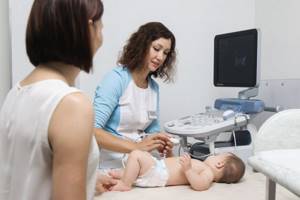
Kidney ultrasound
Only after a complete examination will the doctor make a diagnosis and prescribe treatment. If a dangerous pathology is detected, the baby will be hospitalized. You cannot refuse treatment, because infections in infants develop rapidly, so it is better to be under the supervision of medical personnel.
In the future, you need to monitor your indicators by donating urine not every month, but after a serious cold or acute respiratory viral infection. The infectious agents remain in the body even after symptoms disappear and can again provoke kidney inflammation.
Children often have to undergo a urine test. It is necessary to approach the study responsibly, follow the rules of hygiene and use only sterile containers. Proper preparation of the material is the key to a reliable result necessary for treatment.
Incorrect urine collection
If a person does not adhere to the rules for collecting urine, this will distort the results of the analysis. The most common mistakes patients make:
- undergo significant physical activity before analysis;
- drink alcohol before giving urine;
- donate urine during the day or evening;
- do not toilet the genitals;
- use a dirty container;
- do not release the first portion of urine into the toilet;
- biomaterial is stored for too long before delivery to a medical facility.
If you take a repeat urine test in compliance with all the rules, the results may be satisfactory. But what are the reasons for poor analysis if the rules were followed?
When a bad indicator is not a disease
During the collection and research process, common errors may occur:
- improperly collected urine sample;
- poor preparation for the study, for example, the use of products with dyes on the eve of urine collection;
- long transportation leading to the proliferation of bacteria and fungi;
- incorrectly conducted research, recording the parameters of another patient.
In this case, the resulting indicator is not a disease. Therefore, doctors often prescribe a repeat study of distorted data.
Bad urine may indicate a testing error or the presence of a disease. A general clinical examination helps the doctor and the patient to identify the true cause of pathological symptoms. Receive interpretation and treatment from the attending physician.

